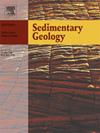Evolution of lithic clasts in a subaquatic debris flow: Conclusions from the Rzucewo site, Poland
IF 2.9
2区 地球科学
Q1 GEOLOGY
引用次数: 0
Abstract
Research on clast evolution in subaquatic debris flows is rare and experiments on this issue are insufficient due to technical limitations. To fill this knowledge gap, we identify the determinants of morphological and lithological diversity of pebbles in Late Pleistocene deposits of subaquatic debris flows. The advantage of the study site is the ability to trace these aspects along the entire cross-section of the subaquatic fan, which is unique. Lithology, size, form (using Sneed and Folk's method), and roundness (using Powers' method) of pebbles ranging in size from 20 to 60 mm in two debrites were analysed. Additionally, the grain size composition of debrites was determined through wet sieving. As a result of inheritance from debris transported in the ice, the majority of pebbles in all samples show lithology similar to the till of the same age and a form close to sub-equant. A downslope increase in the share of more oblate and prolate clasts is recognized, which is explained by the transfer of pebbles more susceptible to buoyancy to the debris-flow front. This may mimic clast form changes caused by abrasion. Moreover, a tendency to transfer the largest pebbles can be observed. The roundness of pebbles increases along with the debris-flow route, despite its relatively short length, mainly due to friction against matrix and collisions with other coarse particles. This trend is observed in different petrographic groups of rocks, regardless of their abrasion resistance. It is most likely that the rotation of pebbles has helped in smoothing out their edges and faces. Our results show that a moderately dynamic environment, with a slope angle relatively smaller compared to experiments using flume channel, but a debris-flow distance similar to those studies, can alter the morphology of pebbles. While experiments focus on subaerial environments, the findings appear to be useful in studies of subaquatic debris flows.
水下泥石流中岩屑的演化:来自波兰Rzucewo遗址的结论
由于技术的限制,对水下泥石流碎屑演化的研究较少,实验研究也较少。为了填补这一知识空白,我们确定了晚更新世水下碎屑流沉积物中鹅卵石形态和岩性多样性的决定因素。该研究地点的优势在于能够沿着水下扇的整个横截面追踪这些方面,这是独一无二的。研究人员分析了两个碎屑中20至60毫米大小的鹅卵石的岩性、大小、形状(使用Sneed和Folk的方法)和圆度(使用Powers的方法)。此外,通过湿法筛分确定了碎屑的粒度组成。由于从冰中搬运的碎屑中继承,所有样品中的大多数鹅卵石显示出与同一时代的岩石相似的岩性和接近亚等分的形式。扁状和长状碎屑的比例呈下坡增加,这可以解释为更容易受浮力影响的卵石向泥石流前缘转移。这可能模仿由磨损引起的碎屑形态变化。此外,还可以观察到转移最大鹅卵石的趋势。鹅卵石的圆度随着泥石流路线的增加而增加,尽管其长度相对较短,主要是由于与基质的摩擦和与其他粗颗粒的碰撞。不管岩石的耐磨性如何,这种趋势在不同的岩石组中都可以观察到。最有可能的是,鹅卵石的旋转有助于磨平它们的边缘和表面。我们的研究结果表明,一个适度的动态环境,与水槽通道的实验相比,坡度相对较小,但与这些研究相似的泥石流距离,可以改变鹅卵石的形态。虽然实验集中在水下环境,但这些发现似乎对水下泥石流的研究很有用。
本文章由计算机程序翻译,如有差异,请以英文原文为准。
求助全文
约1分钟内获得全文
求助全文
来源期刊

Sedimentary Geology
地学-地质学
CiteScore
5.10
自引率
7.10%
发文量
133
审稿时长
32 days
期刊介绍:
Sedimentary Geology is a journal that rapidly publishes high quality, original research and review papers that cover all aspects of sediments and sedimentary rocks at all spatial and temporal scales. Submitted papers must make a significant contribution to the field of study and must place the research in a broad context, so that it is of interest to the diverse, international readership of the journal. Papers that are largely descriptive in nature, of limited scope or local geographical significance, or based on limited data will not be considered for publication.
 求助内容:
求助内容: 应助结果提醒方式:
应助结果提醒方式:


